UPSC Exam > UPSC Notes > Geography for UPSC CSE > Grasslands of the World
Grasslands of the World | Geography for UPSC CSE PDF Download
Grasslands
- A grassland ecosystem is a dry area of land dominated by grasses.
- Huge trees and shrubs are very rarely found in these regions, which is mainly because of the climatic conditions and other environmental factors, which do not withstand the plant’s requirements.

- Grasslands are also called transitional landscapes.
- In a grassland ecosystem, the vegetation is dominated by herbs and grass.
 Natural grasslands of the world
Natural grasslands of the world
- These ecosystems are mainly found in regions, where there is a scarcity of water and not enough and regular rainfall to support the growth of plants and forests.
- The grassland ecosystem lies between the deserts and the forest ecosystems.
- Savanna grasslands and temperate grasslands are some examples of grassland ecosystems.
- There are many other types of grassland around the world, which go by many names.
- Grasslands of South America are known as pampas and central Eurasian grasslands are referred to as steppes and so on.
Types of Grasslands
Grasslands are subdivided into two types, namely:
Tropical Grasslands
- Tropical grasslands have dry and wet seasons that remain warm all the time.
- These regions are warm throughout the year, followed by dry and wet seasons.
- Tropical Grasslands are the ones that receive 50 cm to 130 cm rain.
- Also, the tropical grasslands contain quite short plants which makes it an excellent hunting ground.
- For instance, the African savanna is one of the tropical grasslands.
- In conclusion, the tropical grassland is a home for elephants, giraffes, lions, cheetahs, zebras, and other spectacular species.
Tropical Grasslands are:
- East Africa - Savanna
- Brazil - Campos
- Venezuela - Llanos
Temperate Grasslands
- These grasslands are similar to tropical grasslands, except for the climatic conditions.
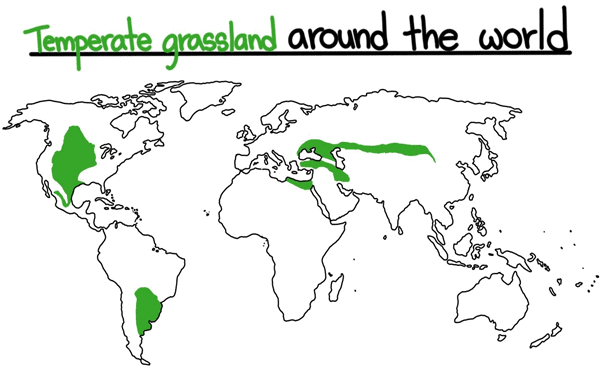 Temperate Grasslands of the World
Temperate Grasslands of the World
- They have cold winters and warm summers with 25 cm and 75 cm. of annual rainfall. Shrublands are the best example of temperate grasslands.
- Moreover, these grasslands suffer extreme climates.
- In the cold season, the temperature can reach up Flooded Grasslands to 0 degrees Fahrenheit.
- While in the summer season it reaches up to 90 degrees in some areas.
- The precipitation in these grasslands is mostly in the form of dew and snow.
- For instance, some vegetation that grows here are, cacti, sagebrush, perennial grasses, buffalo grass clovers, and wild indigos, etc.
Temperate Grasslands are:
- Argentina - Pampas
- America - Prairie
- South Africa - Veld
- Asia - Steppe
- Australia - Down
Grasslands of the World
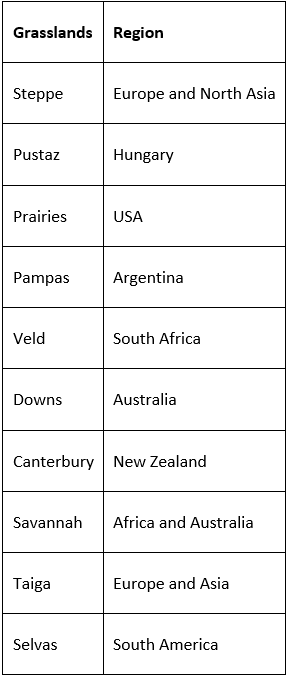
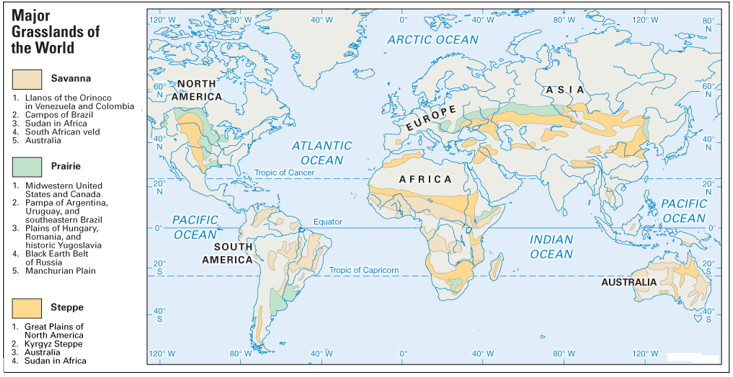
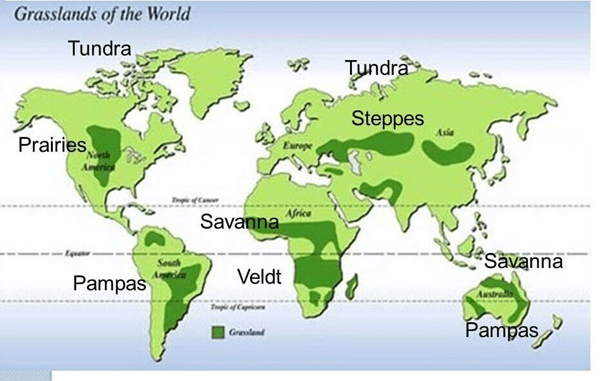
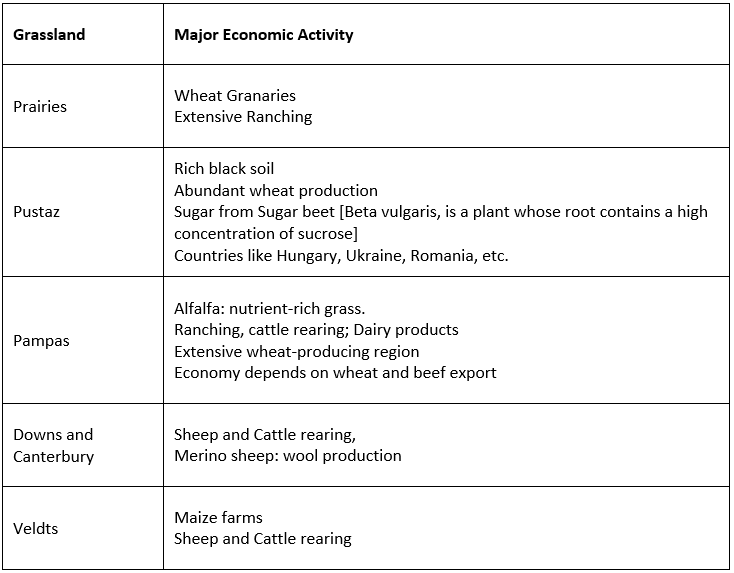
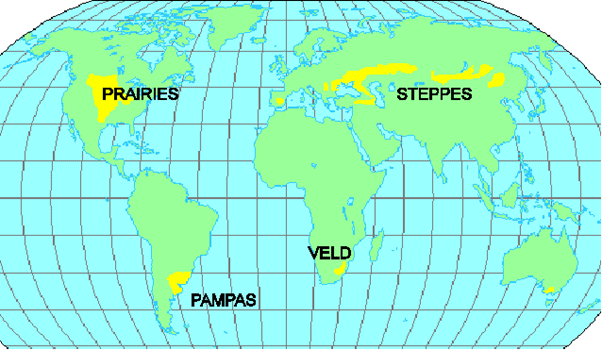
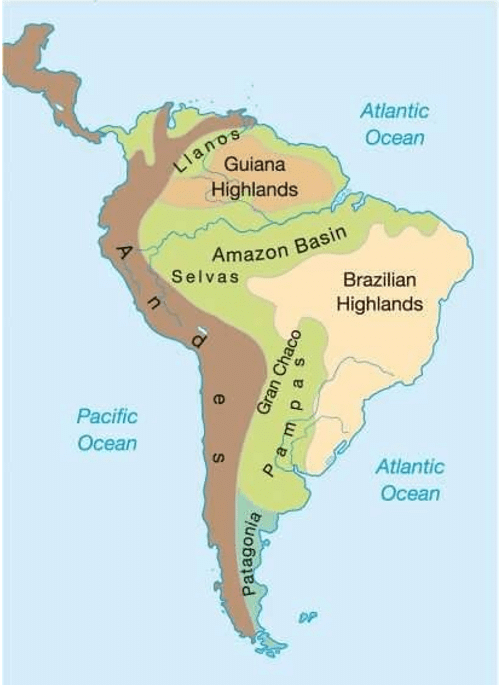
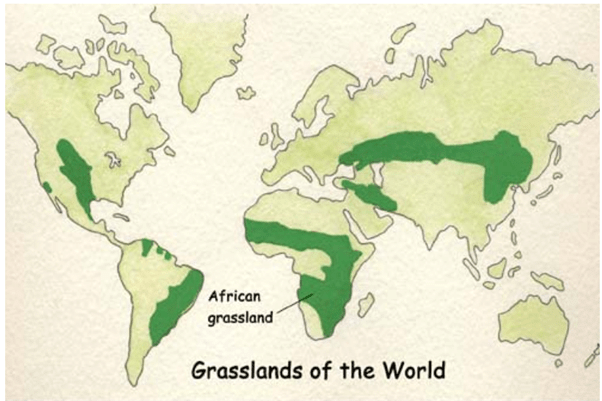
The document Grasslands of the World | Geography for UPSC CSE is a part of the UPSC Course Geography for UPSC CSE.
All you need of UPSC at this link: UPSC
|
264 videos|875 docs|232 tests
|
FAQs on Grasslands of the World - Geography for UPSC CSE
| 1. What are grasslands? |  |
Ans. Grasslands are large areas of land covered with grasses and other herbaceous plants. They are characterized by their lack of trees and are found on every continent except Antarctica.
| 2. What are the different types of grasslands? |  |
Ans. There are two main types of grasslands: temperate grasslands and tropical grasslands. Temperate grasslands are found in regions with cold winters and hot summers, while tropical grasslands, also known as savannas, are found in warm climates with distinct wet and dry seasons.
| 3. What are some examples of grasslands around the world? |  |
Ans. Some examples of grasslands around the world include the Great Plains in North America, the Pampas in South America, the steppes of Eurasia, the African savannas, and the Australian rangelands.
| 4. What is the importance of grasslands? |  |
Ans. Grasslands play a crucial role in maintaining biodiversity, providing habitat for numerous plant and animal species. They also contribute to carbon sequestration, water filtration, and soil conservation. Additionally, grasslands are essential for grazing animals and support agricultural activities.
| 5. How are grasslands threatened and what are the conservation efforts in place? |  |
Ans. Grasslands are threatened by factors such as habitat loss, overgrazing, agricultural expansion, and climate change. Conservation efforts include the establishment of protected areas, sustainable grazing practices, restoration projects, and raising awareness about the importance of grassland ecosystems.
Related Searches

















